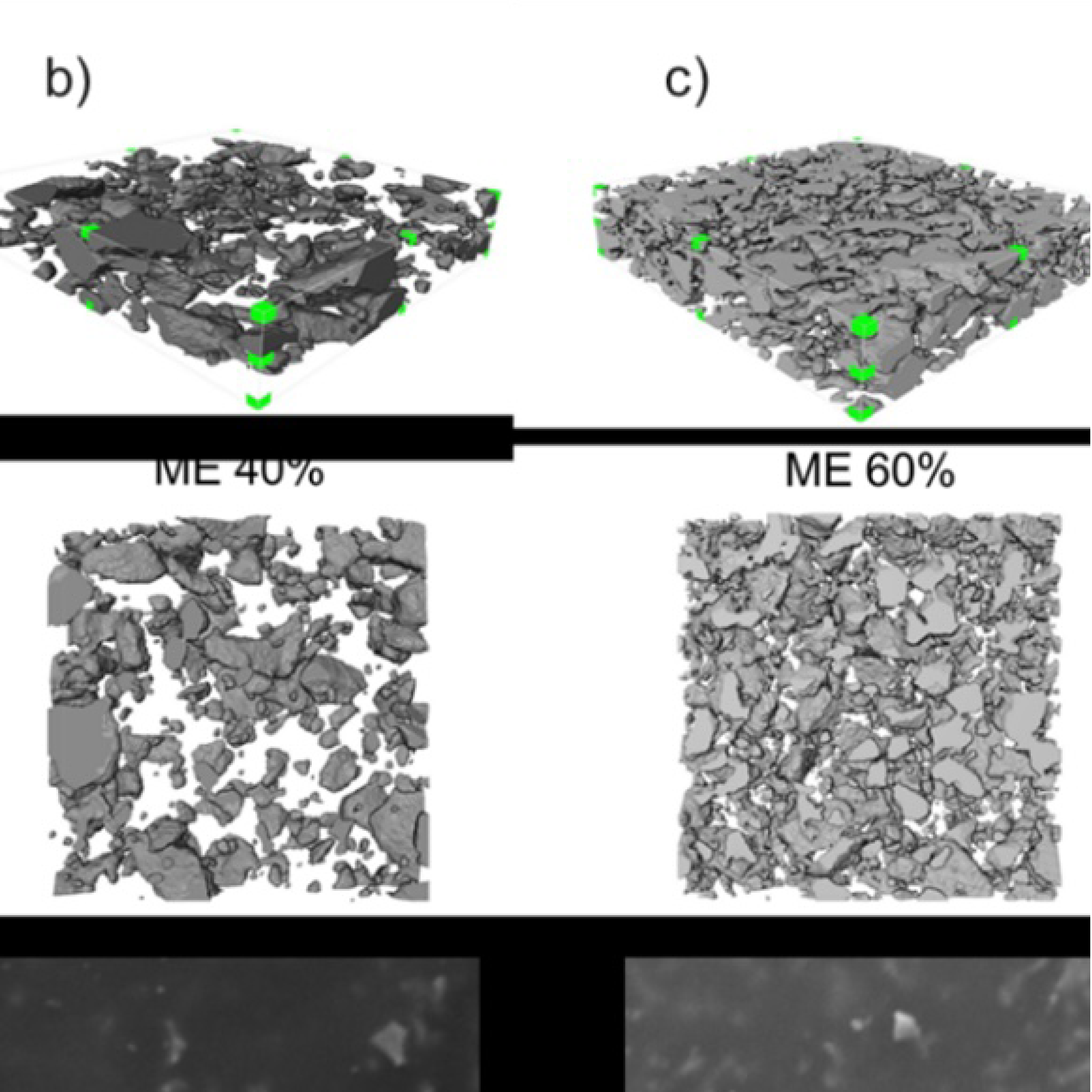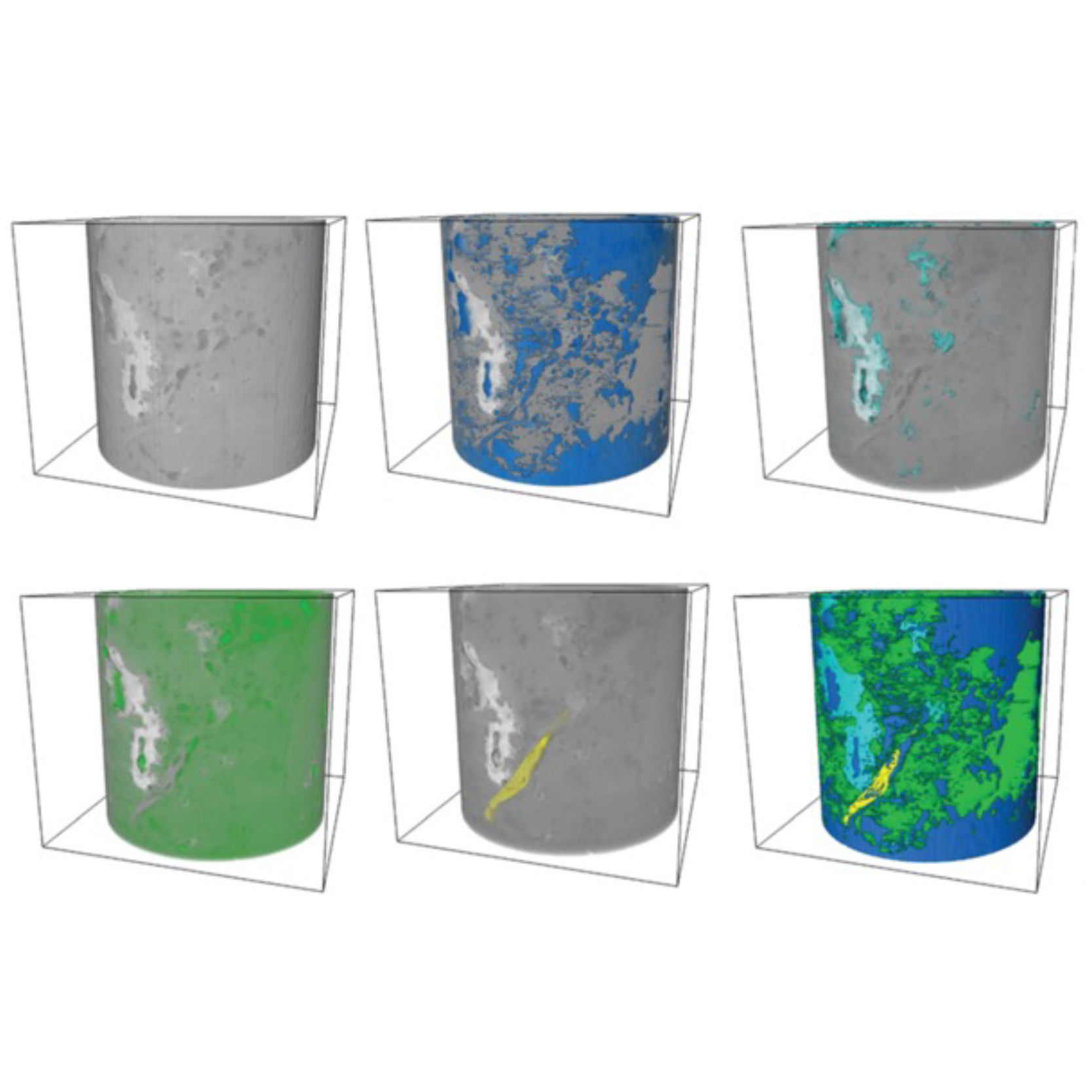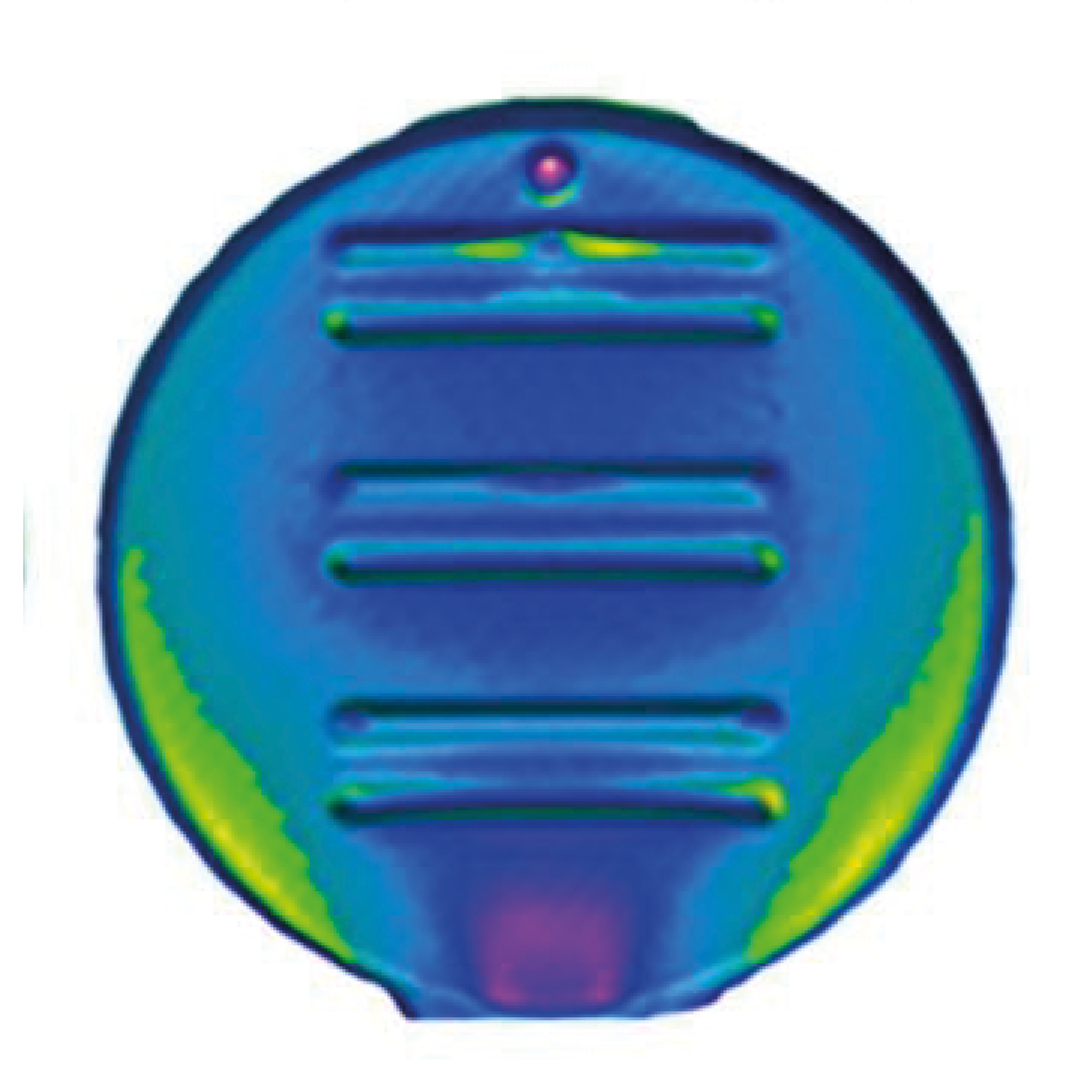
3D Microstructure of Soft Magnetic Elastomer Membrane
Soft magnetic elastomer membranes enable fast magnetic actuation under low fields. In our project, we… Read More
Events & Resources
News, Events and Resources from NXCT Partners
Injection of CO2 into shale reservoirs to enhance gas recovery and simultaneously sequester greenhouse gases is a potential contributor towards the carbon-neutral target. This study qualitatively and quantitatively investigates the Bowland shale microstructure in 3D at five length scales to perform a comprehensive analysis on the storage space and flow pathways.
During the energy transition from fossil fuel to green energy, relatively clean gas extraction and subsurface carbon sequestration are two of the major pathways towards the carbon-neutral target. Injection of CO2 into shale reservoirs has the potential to integrate both pathways, to enhance gas recovery and sequester greenhouse gases simultaneously.
Shales have heterogeneous and complex microstructure, making the feasibility investigation and scientific understanding of CO2 injection in shales highly challenging. This project imaged the key features, including artificial fractures, matrix fabric, individual mineral grains, organic matter particles, and pores, at five different scales in 3D and quantitatively analysed their contribution in the natural gas extraction and CO2 injection pathways. This is needed to understand the connectivity and network of pore space.
At NXCT, two nano-CT tomograms of adsorption and phase contrast scans were collected and registered together for an enhanced quantification of minerals and organic matter (Figure above). A model of CH4 and CO2 flow pathways and storage in shales across multiple scales was built based on the enhanced understanding of 3D quantified microstructure. Meanwhile, the feasibility of simultaneously enhanced gas recovery and subsurface CO2 storage in Bowland shale, the largest shale gas potential formation in the UK, was assessed. Both theoretical maximum storage and the technical and economical storage were estimated, providing crucial guidance for energy development in energy transition periods.
The results are published in Energy Environ. Sci., 14, 4481-4498 DOI: 10.1039/D0EE03651J and the International Journal of Coal Geology 244, 103816 DOI: 10.1016/j.coal.2021.103816
“‘NXCT has provided me with fantastic support in my NERC fellowship project and with the PhD students I supervise in subsurface energy and storage. It provides an excellent opportunity to characterise internal structure and pore network of the rocks in 3D and 4D (i.e. 3D+time) at macro- to micro- scale to enhance the low-carbon energy extraction and assess the potential of renewable energy storage. NXCT has advanced my research to an internationally-leading level and extends its scope. With NXCT’s help, I have successfully secured grants of over £600k from UKRI and over £100k from industries. Meanwhile, more than 10 papers with results produced from NXCT have been published in high-quality international journals.“
Dr Lin Ma, Presidential Research Fellow, University of Manchester


Soft magnetic elastomer membranes enable fast magnetic actuation under low fields. In our project, we… Read More

Nowadays, the increasing capability of micro-manufacturing processes enables the manufacture of miniature products with extremely… Read More

Injection of CO2 into shale reservoirs to enhance gas recovery and simultaneously sequester greenhouse… Read More